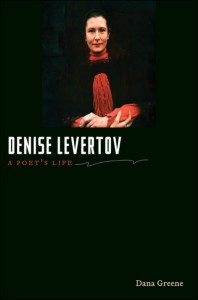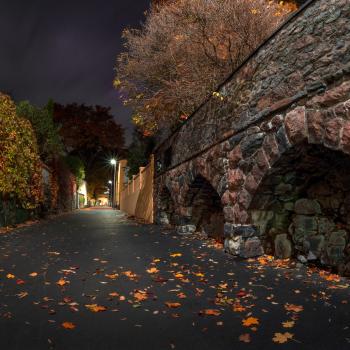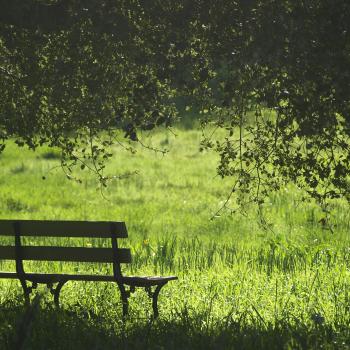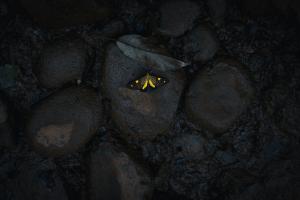 Yesterday, in Part One of my review of the major new biography, Denise Levertov: A Poet’s Life, by Dana Greene, I focused on Greene’s information and insights into Levertov’s life. Today I turn to the other term of the book’s sub-title: the poet.
Yesterday, in Part One of my review of the major new biography, Denise Levertov: A Poet’s Life, by Dana Greene, I focused on Greene’s information and insights into Levertov’s life. Today I turn to the other term of the book’s sub-title: the poet.
Since Greene is writing a biography, not a work of literary criticism, her interest is in how Levertov’s extraordinary body of poetry both shaped and was shaped by her life experience. Indeed, Levertov’s life and art were unusually integrated.
Greene quotes one of Levertov’s colleagues after her death: “She was a unique presence because in her… everything came together in an organic whole—poetry, religion, history and politics, the natural world and people.”
From childhood, Denise sensed her vocation as a poet. At age twelve, she boldly sent some poems to T.S. Eliot. He replied encouragingly, re-enforcing her vocational identity.
Other major literary figures mentored her and made contacts for her with the poetry world, especially after she moved to the U.S., including: Kenneth Rexroth, William Carlos Williams, Robert Duncan, Robert Creeley, and James Laughlin (head of New Directions, which soon became her publisher.)
Levertov’s early and continuing acclaim, which the quality of her poetry did deserve, was facilitated by a personal charm that made these people eager to advocate for her.
Earning a living as a poet came more slowly. Gradually, as her fame grew, she was invited to give paid poetry readings around the country—and later in life, around the world. But financial security as a poet didn’t come until she began receiving faculty appointments at various universities from Brandeis to Sydney, Australia, with her longest stays at Tufts and Stanford Universities.
Meanwhile, her poetic style was evolving.
Her first published collection, in 1946 (when she was twenty-three), was considered by Rexroth to be representative of the New Romanticism. Greene points out that its title, The Double Image, captured the duality of joy and sorrow that would remain the poles of Levertov’s poetic vision all her life.
When she moved to the U.S., she put herself under the tutelage of William Carlos Williams, eager as she was to write pared-down poetry in the American idiom.
But by the time her collection The Jacob’s Ladder came out in 1961, she had found her own voice and vision. Her poetry, Greene writes, “would be a celebration of mystery.” It would also probe the world’s evil and suffering.
Levertov thought a lot about the poet’s role in the larger culture. In her diaries, letters, and (as her fame grew) lectures and essays, she spoke about the interaction of poetry and lived experience.
Greene quotes from a 1967 lecture on the poet’s responsibility:
When words penetrate deep into us they change the chemistry of the soul, of the imagination. We have no right to do that to people if we don’t share the consequences.
By this time, Levertov had thrown herself into political activism, and her poetry engaged this dimension of her life. Criticized by many for writing political poetry, she was eloquent in her defense—and utterly consistent with her lifelong conviction that a poet must write out of what she experiences.
Greene summarizes: “If the work of poetry was to celebrate life, then the poet must have total involvement in life in order to preserve it. To be poet was to be ‘poet in the world’”—this last phrase the title of Levertov’s 1973 essay collection.
Similarly, when Levertov began moving toward Christian faith and then finally embraced it, her poetry both reflected and furthered her spiritual journey.
For instance, it was “through her engagement with the images given her in the creation of poems” that she worked through theological issues that puzzled her. For Levertov, Greene continues, “both art and faith were dependent on imagination; both were ‘ventures into the unknown.’”
Many more riches await the reader of this biography, insights not only into Levertov’s own life and poetry but also into the mysterious interaction of life and art in all of us.
In a moving epilogue, Greene is forthright about the limits of what a biography can accomplish—especially when the subject had so complex an inner life.
This biography was undertaken as an experiment in penetrating the inner life of Denise Levertov. The voluminous raw materials—diaries, written and oral interviews, correspondence, poetry, and essays—allow the biographer to investigate and intuit, patch and paste, imagine and verify. To gain a closer, tauter hold on Levertov is to discover that she remains elusive, much like the mountain [viewed from the window of her final Seattle home]—present and absent, her person never fully grasped, but only pointed to and honored.
When I first held Greene’s biography, I was puzzled by the cover: solid black, with a small photo portrait of Levertov’s face, bright red scarf, and red sleeve barely emerging from the blackness.
Having now read the book, I find this jacket cover the perfect image of Levertov’s elusiveness and of the dark background out of which she wrote magnificent poetry of both sorrow and brilliant joy.
Her face has a calm smile, an inner peace—grounded in God—that she was finally blessed with.










